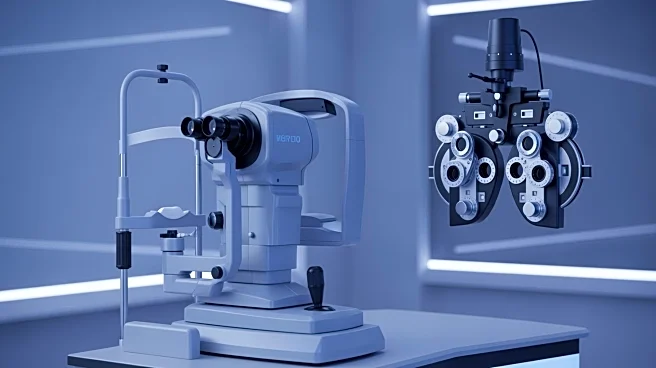What's Happening?
Eli Lilly has entered into a significant collaboration with MeiraGTx Holdings, a genetic medicines biotech, to develop therapies for eye diseases. The deal involves an upfront payment of $75 million to MeiraGTx, with potential milestone payments reaching
up to $400 million. This partnership grants Lilly rights to AAV-AIPL1, a genetic medicine aimed at treating Leber congenital amaurosis 4 (LCA4), a severe genetic eye disease. The therapy is designed to deliver a functional copy of the AIPL1 gene to restore vision. Additionally, Lilly will have access to MeiraGTx’s gene therapy technologies, including novel intravitreal capsids and AI-generated promoters, as well as proprietary riboswitch technology for gene editing in the eye. This move follows Lilly's recent $1.2 billion partnership with SangeneBio and the acquisition of Adverum Biotechnologies, both aimed at expanding its presence in the ophthalmology sector.
Why It's Important?
This partnership underscores Eli Lilly's strategic focus on expanding its portfolio in the ophthalmology sector, particularly in genetic eye diseases. By securing rights to innovative gene therapy technologies, Lilly positions itself as a leader in the development of treatments for severe vision impairments. The collaboration with MeiraGTx not only enhances Lilly's research capabilities but also strengthens its competitive edge against other pharmaceutical giants like Novo Nordisk. The potential success of these therapies could significantly impact patients suffering from genetic eye diseases, offering new hope for vision restoration. Furthermore, the financial commitment highlights the growing investment in genetic medicine as a promising frontier in healthcare.
What's Next?
Eli Lilly is expected to advance the development of AAV-AIPL1 and other ophthalmology targets using MeiraGTx’s technologies. The success of these initiatives could lead to further collaborations or acquisitions in the genetic medicine space. Stakeholders, including investors and patients, will be closely monitoring the progress of these therapies. Regulatory approvals and clinical trial outcomes will be critical in determining the timeline for bringing these treatments to market. Additionally, the partnership may prompt other pharmaceutical companies to pursue similar collaborations, intensifying competition in the genetic eye disease treatment market.














